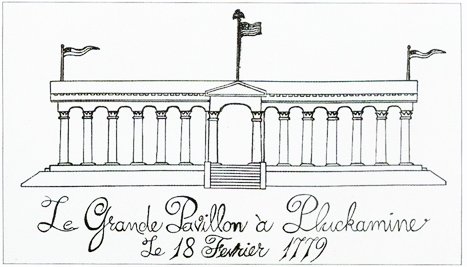The anniversary of America’s alliance with France was celebrated on the 18th of February at Pluckemin, at a very elegant entertainment and display of fireworks given by General Knox, and the officers of artillery. It was postponed to this late day on account of His Excellency General Washington’s absence from camp. General Washington — the principal officers of the army: Mrs. Washington, Mrs. Greene — Mrs. Knox; the gentlemen and ladies for a large circuit around the camp, were of the company. Besides these, there was a vast concourse of spectators from every part of the Jerseys. The barracks of the artillery are at a small distance from Pluckemin on a piece of rising ground which shews them to great advantage. The entertainment and ball were held in the academy of the Park.
A description of the thirteen paintings exhibited at the first anniversary of the Franco-American Treaty of Alliance, celebrated at Pluckemin on February 18, 1779. About four o’clock in the afternoon the celebration of the Alliance was announced by the discharge of thirteen cannon, when the company assembled in the academy, to a very elegant dinner. The room was spacious, and the tables very prettily disposed both as to prospect and convenience– The festivity was universal, and the toasts descriptive of the happy event, which had given certainty to our liberties, empire — and independence.
The New Jersey Gazette – Trenton, March 3, 1779
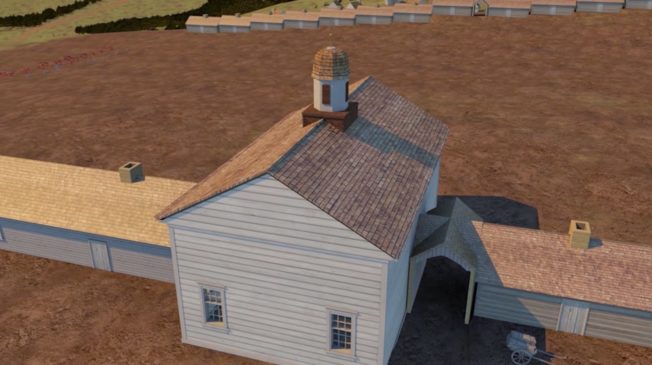
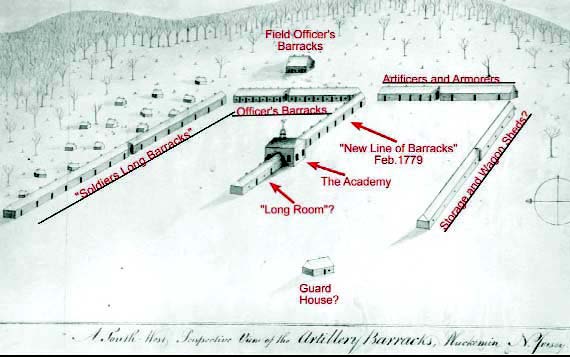
In the evening was exhibited a very fine set of fireworks, conducted by Col. Stevens —
arranged on the point of a Temple one hundred feet in length, and proportionally high. The Temple shewed THIRTEEN arches, each displaying an illuminated painting. — The centre arch was ornamental with a pediment, larger than any of the others; — and the whole edifice supported by a colonnade, of the Corinthian order.
The 13 Paintings at Pluckemin
The fireworks probably took place in a large pavilion or temple which was erected 100 feet long, showing 13 arches decorated with evergreens and each displaying illuminated paintings and mottos descriptive of American independence and liberty, all supported by Corinthian columns. The center arch was ornamented with a large pediment, larger than the others. The temple was proportionately high for the exhibit and was present in front of the Pluckemin Academy.
The illuminated paintings were disposed in the following order:
1. The 1st arch on the right represented the commencement of hostilities at Lexington, with this inscription. The scene opened.
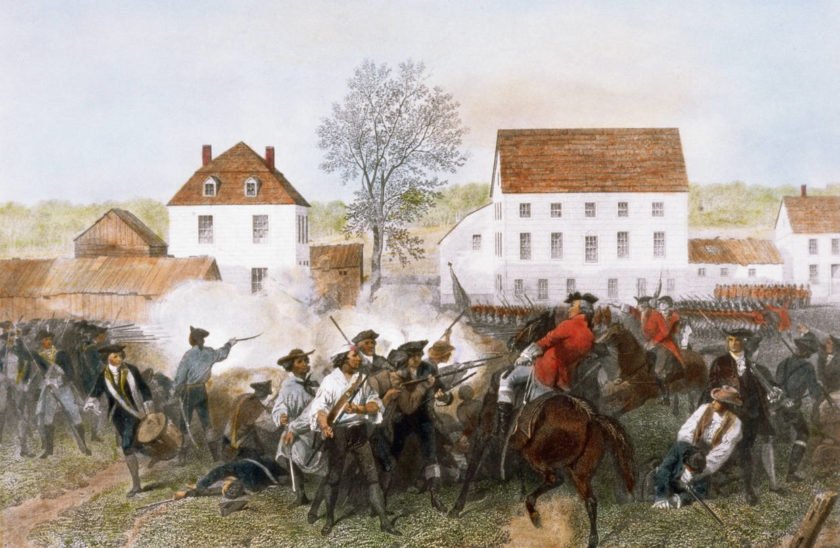
2. British clemency. Represented in the burning of Charlestown, Falmouth, Norfolk and Kingston.
3d. The separation of America from Britain. A magnificent arch broken in the centre, with this motto. By your tyranny to the people of America you have separated the wide arch of an extended empire.
4th. Britain represented as a decaying empire–by a barren country–broken arches-fallen spires–ships deserting its shores–birds of prey hovering over its mouldering cities–and a gloomy setting sun.-
Motto. The Babylonian spires are sunk- Achaia–Rome–and Egypt mouldering down. Time shakes the stable tyranny of thrones, And tottering empires rush by their own weight.
5th. AMERICA represented as a rising Empire. Prospect of a fertile country–harbours—and rivers covered with ships–new canals opening–cities rising amidst woods—a splendid sun emerging from a bright horizon. Motto, New worlds are still emerging from the deep. The old descending in their turns to rise.
6th. A grand illuminated representation of France’s LOUIS XVI. The encourager of letters—the supporter of the rights of humanity—the ALLY and FRIEND of the AMERICAN PEOPLE.
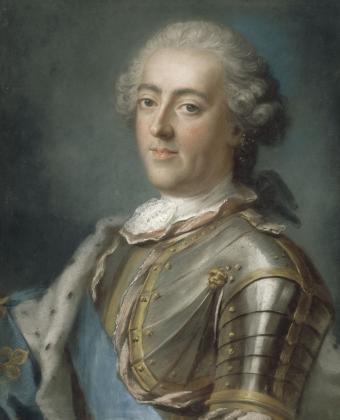
7th. The centre arch. THE FATHERS IN CONGRESS. Motto Nil desperandum republicae.
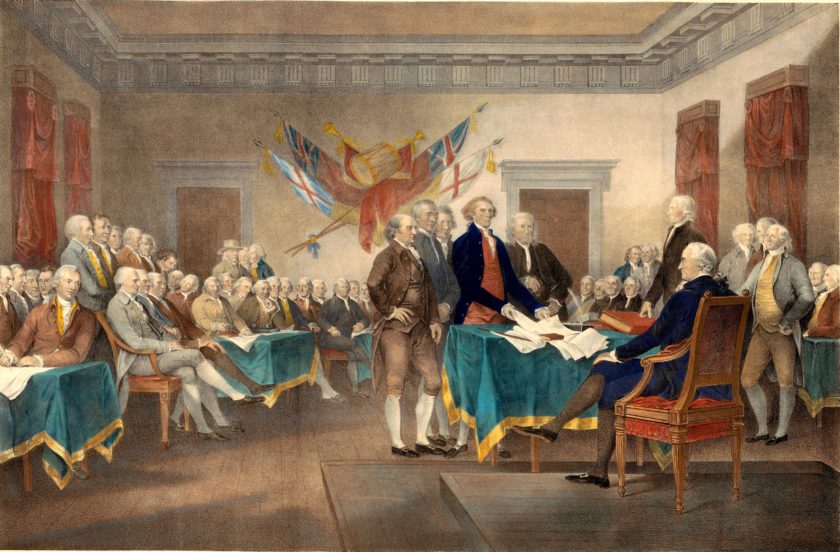
8th. The American Philosopher and Ambassador extracting lightning from the clouds.
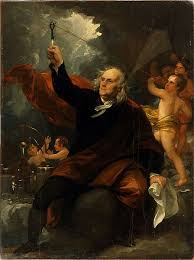
9th. The battle near Saratoga, 7th October, 1777.
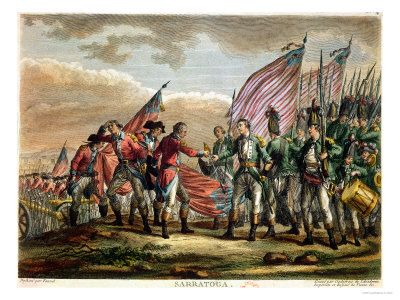
10th. The Convention of Saratoga.
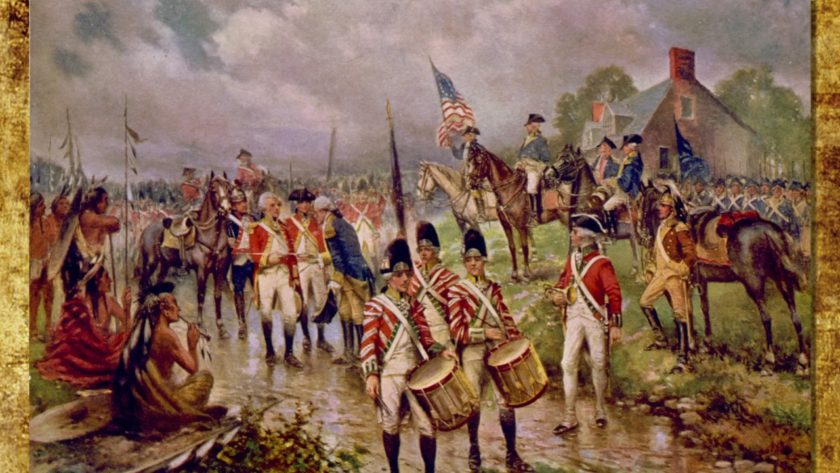
11th. A representation of the Sea fight off Ushant, between Count D’ Orvilliers and Admirial Kepple.

12th. Warren–Montgomery–Mercer–Wooster–Nash–and a crowd of heros who have fallen in the American contest, in Elisium, receiving the thanks and praises of Brutus,—Cato—and those spirits who in all ages have gloriously struggled against tyrants and tyranny. Motto. Those who shed their blood in such a cause shall live and reign for-ever.
13th. Represented peace with all her train of blessings. Her right hand displayed an olive branch-at her feet lay the honors of harvest-the back ground was filled with flourishing cities–ports crowded with ships–and other emblems of an extensive empire, and unrestrained commerce.
When the fire works were finished the company returned to the academy, and concluded the celebration by a very splendid ball,-The whole was conducted in a style and manner that reflects great honor on the taste of the managers. The news, announced to Congress, from the Spanish branch of the house of BOURBON, arrived at the moment of celebration, nothing could have, so opportunely, increased
the good humor of the company, or added to those animated expressions of pleasure which arose on the occasion.

